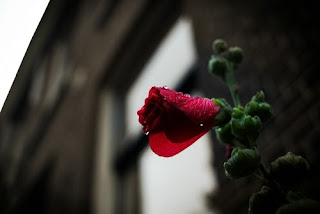This probably should have been the first post on my blog, but I felt like there should be more information about other things than just manual focus stuff. Of course this blog is geared towards shooting with manual focus lenses, but I do not intend to only talk about this, but about photography as a whole.
Anyway, let’s start explaining why you would even want to photograph with manual focus lenses. Well first of all they are cheap, I have not spend over 25 euro’s for a lens. People tend to get used to their autofocus and will sell their old photography stuff for cheap. Even though the lenses may be of good quality. For example the 50mm f/2, a stunningly sharp and good lens and I picked it up for only 15 euro’s.
You get access to a quality of glass you would never have been able to buy without being it an MF lens. Even the nikkor 35mm f/1.8 (which is intended for amateurs and is as far as I know one of the cheapest Nikon autofocus lenses) costs over 100 euro’s. As a student I certainly do not have a lot of money to spend and when I was looking for alternatives I learned about the compatibility of Nikon with it’s older lenses.
Almost every nikkor lens ever made (except for the invasive fisheyes) will fit on a Nikon camera. Although you need to know that cameras with a autofocusmotor drive in it (d70,d50,d90,d7000 etc.) will get damaged if you mount a pre-ai lens. But if you have a Nikon d40(x), d60, d3000 or a d5000 you can mount virtually every lens except for these old fisheyes.
If you have something less professional than the Nikon d300 or above you will not have metering with the MF lenses. And here is where the fun starts. Have you ever did give the metering system of your camera really the attention it deserves? I certainly did not before I switched over to MF. I always took for granted that the camera knew in almost every situation how to expose the scene properly. And now you’re on your own. I can’t deny it, it’s a steep learning curve. You will miss photographs and you will hate yourself for buying that lens. But that’s just in the beginning. After a while of guessing the exposure you will get the hang of it. So here are a few tips to begin with:
Don’t follow the sunny f/16 rule. I have felt that it underexposes the image if you use ISO 100, 1/100th of a second and f/16 during a sunny day. I tent to use something like f/11. But this really depends on the time of the year, time of the day, where you are in the world, and the amount of light that’s reflected in the atmosphere. After some practice just follow your instinct, from time to time I just get the idea let’s put the exposure this way without even be able to justify that guess and it works. I’m not a MF-god or something like that, but after a while you just get the hang of it
Only fiddle with one variable in the beginning. Guessing the exposure is hard enough, don’t make it any harder. Set the aperture to such a value that you will get sufficient depth of field, put your ISO as low or as high as you want, and only fiddle with the shutter speed. During the day you will mostly find yourself shooting above 1/80th of a second, so there will not be major changes due to a longer/shorter shutter speed since it’s already pretty fast
Use the histogram. The display can fool you bigtime, and when you use your meter you can trust it most of the times. But now you have to do the exposure yourself, and the screen gives you a different impression when the sun shines than when you’re inside or when it’s dark.
Shoot RAW, with RAW you will be able to change more than with JPEG, you won’t have to worry about white balance, and most important you will be able to change the exposure a bit without loosing too much quality.
The reward, this certainly is the best part of it. It feels so rewarding to do everything yourself. And you learn so much more about photography. I knew how the exposure triangle etc. worked before I started using MF lenses, but now I am more conscious of them. And I think that's a good thing, you can let your camera do all the work but if you don't know why the camera is behaving the way it does you'll be less able to anticipate on any mistakes. So if you're a Nikon shooter,(or any other brand which allows you to mount old lenses) look through ebay, buy a cheap prime and try it yourself. If you don't like it at all, you probably can sell the lens for around the same amount again on ebay.



With a d5000 there is no metering?
BeantwoordenVerwijderenAs far as I know there is not
BeantwoordenVerwijderen